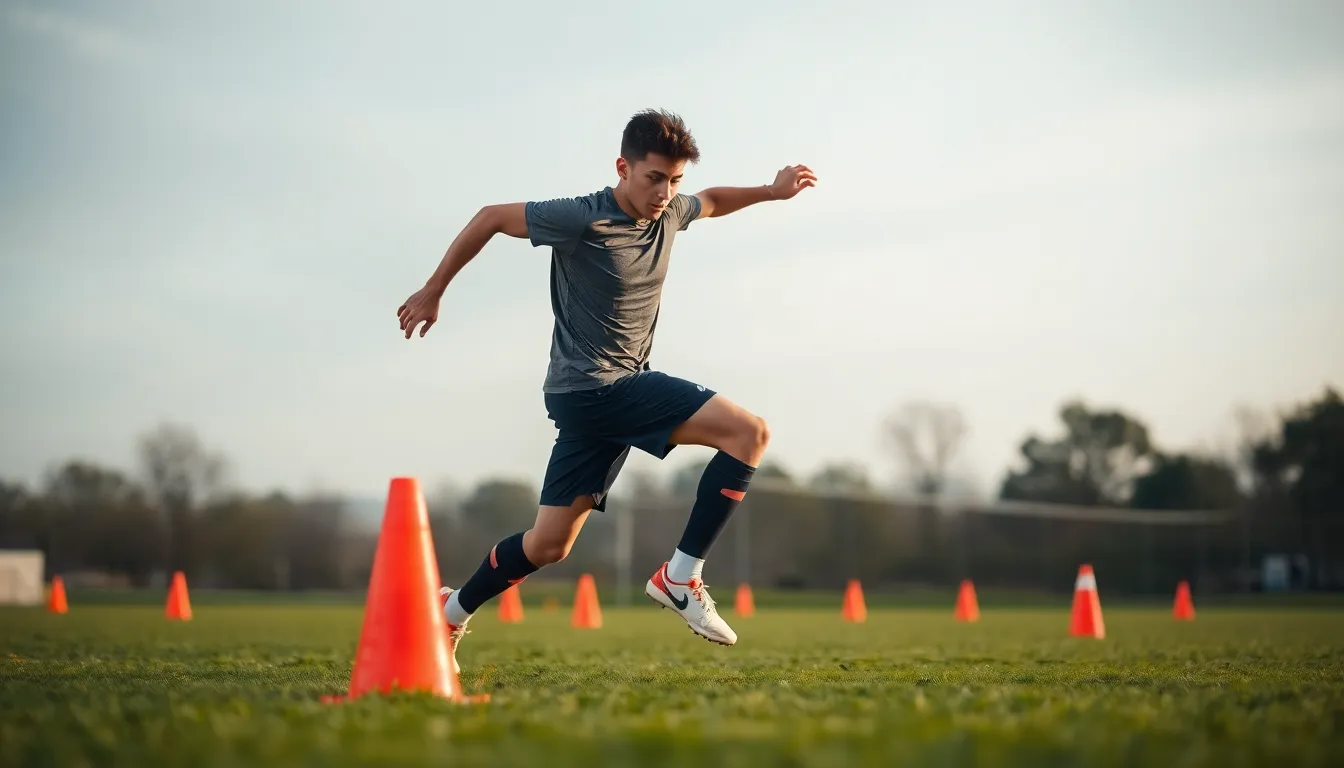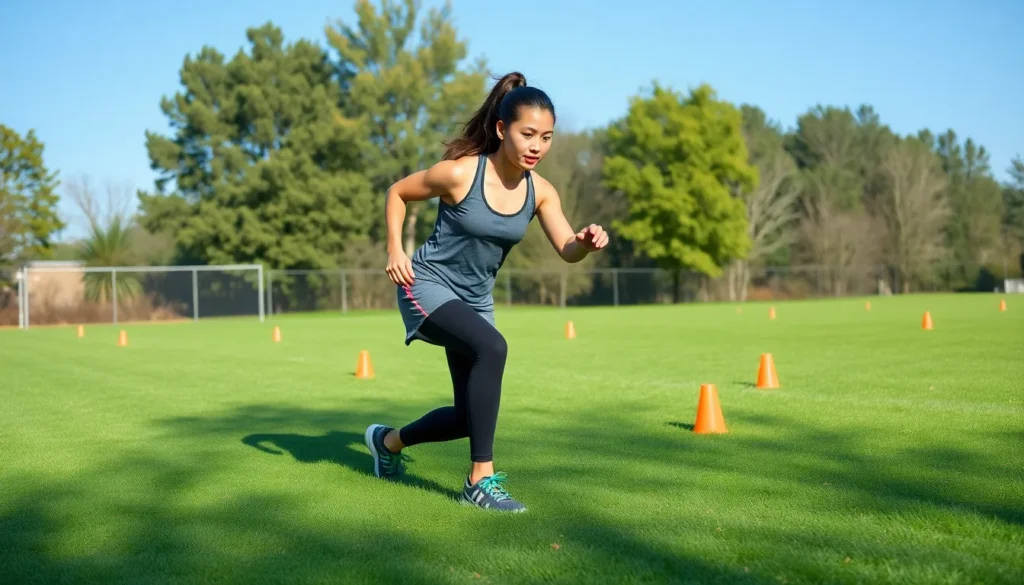In the world of health-related fitness, agility and reaction time are the dynamic duo that can make or break your game—literally. Imagine dodging a rogue soccer ball or gracefully navigating through a crowded gym. It’s not just about looking good; it’s about being quick on your feet and ready for anything life throws your way.
While some might think agility is just for athletes or ninjas, the truth is everyone can benefit from sharpening these skills. Whether it’s sprinting after the ice cream truck or avoiding that awkward conversation at a party, agility and reaction time keep you on your toes. So let’s dive into why these components are essential for your fitness journey and how they can transform your everyday life into a more agile and responsive adventure.
agility and reaction time are two components of health-related fitness.
Health-related fitness encompasses various components that contribute to overall well-being. This type of fitness focuses on physical attributes that improve an individual’s quality of life and functional abilities.
Definition of Health-Related Fitness
Health-related fitness includes five key components: cardiovascular endurance, muscular strength, muscular endurance, flexibility, and body composition. Each element plays a vital role in maintaining optimal health. For example, cardiovascular endurance promotes efficient oxygen use during physical activity. Muscular strength provides the power necessary for daily tasks. Flexibility enhances range of motion and reduces injury risk. Collectively, these components support a person’s ability to perform everyday activities with ease, which highlights their significance in overall fitness.
Importance of Health-Related Fitness Components
Understanding the importance of health-related fitness components enhances life quality. Cardiovascular endurance improves heart health and stamina, while muscular strength assists in performing physical tasks efficiently. Enhancing flexibility supports injury prevention and promotes better posture. Monitoring body composition fosters healthy weight management and reduces chronic disease risks. Emphasizing these components strengthens overall fitness, encouraging a more active and fulfilling lifestyle. Balancing all these areas contributes to longevity and improved well-being.
Agility in Fitness

Agility plays a vital role in health-related fitness. It enhances an individual’s ability to move quickly and easily, contributing to overall physical performance.
What Is Agility?
Agility involves the ability to change direction rapidly while maintaining control. Athletes often rely on agility for sports like soccer and basketball, where quick maneuvers can determine the outcome of a game. In addition, agility integrates balance, speed, and coordination. Those engaged in various recreational activities might find that improved agility enhances their enjoyment and performance. Successful agility training includes exercises like cone drills, ladder drills, and plyometric jumps. Each of these activities specifically develops and strengthens the necessary skills.
Benefits of Agility in Daily Life
Agility offers numerous benefits beyond sports. Enhanced agility allows for safer navigation through crowded spaces or uneven terrain. Individuals might find it easier to avoid obstacles, reducing the risk of falls and injuries. Improved agility can lead to better reflexes in unexpected situations. For instance, quicker reactions while driving can prevent accidents. Additionally, agility contributes to overall fitness by engaging multiple muscle groups, enhancing cardiovascular health. Individuals who practice agility exercises often experience increased confidence and ability in daily tasks, leading to a more active lifestyle.
Reaction Time in Fitness
Reaction time refers to the duration it takes for an individual to respond to a stimulus. This component of fitness not only influences athletic performance but also impacts daily activities. Fast responses to sudden changes in environment or unexpected events play a crucial role in various situations.
What Is Reaction Time?
Reaction time measures the interval from stimulus awareness to motor response. Various tests exist to measure this aspect of fitness, including simple visual and auditory tests. For example, a ruler drop test evaluates how quickly someone reacts to catch a falling object. Research indicates that reaction times can vary based on age, fitness level, and training. Improved reaction time contributes to effectiveness in both sports and everyday tasks, enhancing overall performance.
Importance of Quick Reaction Time
Quick reaction time significantly enhances safety and performance in numerous activities. Athletes benefit from rapid responses during competitions, allowing them to take advantage of opportunities and avoid injuries. Similarly, in daily life, individuals with better reaction times can navigate crowded spaces and respond to potential hazards efficiently. Enhanced reaction time can lead to improved confidence in physical abilities, encouraging participation in various physical activities. Engaging in exercises designed to improve reaction time, such as agility drills or reaction-based sports, fosters both mental and physical readiness for unexpected challenges.
The Relationship Between Agility and Reaction Time
Agility and reaction time closely interact, enhancing health-related fitness. Both components play significant roles in daily activities and athletic performance.
How They Complement Each Other
Agility enables swift changes in direction, while reaction time measures response speed to stimuli. Athletes often rely on both abilities to execute plays effectively. Improved agility can lead to faster reaction times during sports. For instance, a soccer player dodges an opponent while quickly responding to the ball’s movement. Exercises like ladder drills enhance agility and simultaneously foster quicker reflexes. Training that incorporates both elements creates a synergistic effect, as agility drills build muscular control and speed, reinforcing the body’s overall response mechanisms.
Impact on Overall Fitness Levels
Higher agility and better reaction times contribute to overall fitness levels. Individuals exhibiting these qualities can perform daily tasks with greater efficiency. Those skilled in agility find it easier to navigate their environments, reducing the risk of injury. Improvements in reaction time reflect enhanced mental acuity, fostering quicker responses in emergencies. Regular training in these areas also supports cardiovascular health by increasing stamina and endurance. Incorporating agility and reaction time exercises into fitness routines leads to a more balanced and holistic approach to health-related fitness.
Training Techniques to Improve Agility and Reaction Time
Improving agility and reaction time involves specific exercises and drills designed to enhance performance. Focused training builds essential skills for various activities.
Exercises to Enhance Agility
Cone drills target quick foot movements and sharp direction changes. Incorporating ladder drills encourages coordination and speed, while plyometric exercises help develop explosive strength. Each of these methods enhances muscle control. Implementing dynamic stretches before workouts prepares the body and reduces injury risk. Engaging in sport-specific drills, like shuttle runs for soccer players, creates relevant practice scenarios. Trainers can adjust intensity based on skill levels, ensuring participants remain challenged yet confident.
Drills to Boost Reaction Time
Utilizing reaction balls stimulates fast hand-eye coordination. Participants can incorporate the ruler drop test for simple yet effective assessments of their reflexes. Engaging in partner drills, through sudden movements, fosters quick decisions. Players in sports use drills like the tennis ball bounce, which refines agility and response times. Incorporating video game training, in particular, activates cognitive responses. Practicing these drills regularly strengthens neural pathways, promoting faster reactions in both athletic and everyday situations.
Conclusion
Agility and reaction time play a pivotal role in health-related fitness. By enhancing these components, individuals can improve their performance in sports and daily activities. The synergy between agility and reaction time fosters better coordination and quicker responses to stimuli.
Incorporating specific training techniques not only boosts physical capabilities but also contributes to overall well-being. As individuals prioritize agility and reaction time in their fitness routines, they’ll find themselves navigating life’s challenges with greater ease and confidence. Embracing these elements promotes a more active lifestyle and supports long-term health goals.



